As Gary Nabhan has written, we can’t meaningfully proceed with healing, with restoration, without ‘re-story-ation.’ In other words, our relationship with land cannot heal until we hear its stories. But who will tell them?
—Robin Wall Kimmerer
As a lifelong lover of words, I have long understood the power of story. On a personal level, I know it is the stories I tell myself that shape my beliefs, my actions, my concept of who I am and what I can become. (The corollary to this is that if I want to change my life, I know I must first change the stories I tell myself over and over.)
On a global level, it is the stories passed down from our ancestors, our religions, our culture, social media and more that mold our relationship with each other and with the earth herself. Unfortunately—to the detriment of us all—the loudest stories being told this summer around the world are those of fear, of hatred of the other, of the need for walls and separation, of us versus them.
Furthermore, even in the face of increasingly dire heat, fires, floods and hurricanes, many of us continue to tell the story that the earth is separate from human beings, that it is simply a canvas on which to build, dig up, pave over, deforest and chemicalize according to our whims.
And yet the evidence that this story is fundamentally wrong is overwhelming and growing daily. It is now clear that human beings and all of nature are intricately woven together, interdependent and interconnected. When we harm nature, we harm ourselves. I believe that all of nature has intelligence and is willing and able to communicate with us if we will just listen.
As an individual, I sometimes feel helpless, overwhelmed and sad about the way in which people around the world are fearing, manipulating and dehumanizing each other as well as the thoughtless way in which they are treating the earth. Yet I also understand that such feelings disempower me and that I need to change them within myself.
And so I write stories on Substack about people and places and nature that hopefully add a positive voice to the narrative and that help to break down walls of fear and division and ignorance.
Similarly, the only land I can easily change is my own. And so in the spring of 2020, shortly after moving to our new home on Ireland’s Dingle Peninsula, I asked my husband, Gerhard, if he would be willing to stop mowing the grass, and he agreed.
In reality, this was not a hard decision to make because we both think lawns are boring. We are also strongly opposed to the chemicals so many people apply to keep their lawns green and weed-free. And we are well aware of how threatened native plants, birds, animals and insects are due to rapidly disappearing habitat.
Another factor is that our 1/4 acre property is basically a bog, which means the soil is almost always wet. It also means that when the young neighbor lad turned his ride-around mower loose on our property, it left deep, muddy tracks in the grass that felt to us like wounds in the earth.
In the following paragraphs, I will tell the story of our land, of how she is changing and growing and thriving. I will also share what Gerhard and I are learning and how we are changing as a result.
Getting started
As city dwellers who had always appreciated nature in the broader sense rather than in the details, we weren’t sure how to start turning our property into a home that would welcome and nurture all of Mother Earth’s creations. After a bit of research, I found Ian McGrigor, owner of Gortbrack Farm, to help us.
Ian is an organic farmer, educator and garden designer who helps individuals and communities create thriving gardens that support both wildlife and human beings. To get started, Ian visited us at our home and took a stroll around our property. Then we sat around the dining room table drinking tea and discussing what might be possible.
In the end, we decided not to sow any wildflower seeds ourselves. Instead, we would simply allow nature to bring us whatever she wanted. We would mow the entire yard just once a year in the fall and remove the cuttings. This was because wildflowers apparently thrive in nutrient-poor soil.
We also decided to plant a hedge row of native plants—hawthorn, guelder rose, elder, willow—on the northern side of the property. (The builder of our house had already planted hedge rows on the southern and western sides.) In addition, we decided to add a pond in front of our living room windows, a mini forest of native trees (alder, oak, birch) near the front entry to our property, a few fruit trees to the west of our house, and four raised beds for vegetables and herbs near the back door.
Finally, we decided to create a pathway that would enable us to walk through the property as the grasses and flowers began to grow. (Gerhard also immediately replaced the oil burner with a heat pump and eventually added solar panels to the roof as well.)
Befores and afters
Below is what the front of our house looked like in June 2020.
This is what the front looks like in July 2024.
The hedgerow and mini forest
The work on our garden began in June 2020. First Ian brought an assistant, Michael, who began planting the hedgerow and the mini forest for us.
This is what the hedgerow and the mini forest look like in July 2024.
The pond
While Michael was planting the trees, Gerhard took our lawn mower and mowed an outline of the pond. Then Ian brought in Gene, who brought a large digging machine with him. Gene began digging out the pond in three layers following the pattern that Gerhard had laid out. When doing so, he unearthed numerous large boulders that he placed to one side.
After Gene had dug out the pond, Michael smoothed the layers with a shovel.
Once he was finished, the men stretched a sheet of plastic liner across the entire pond.
After this, they battened down the edges with some of the leftover sod and small rocks.
Then they began filling the pond with water.
Finally, they covered the edges of the entire pond with sod. Gene also used the digger to place the boulders in various places around the pond.
This is what the pond looked like after the work had been completed.
Ian planted one native water lily (with white flowers) in the pond. I later planted 4 more water lilies that I ordered from France. This is what the pond looks like in July 2024.
The pathway
Gene also used the digger to carve out a pathway through the property.
After he had finished, the men laid black plastic over the pathway. Finally, they covered it with small rocks.
Over time, plants have completely covered the rocks. This is what the pathway looks like in July 2024.
The fruit trees
Because our property is so wet, Ian suggested that we create three small hills for the fruit trees and dig a trench between them to drain the water off. In addition--because the pathway crosses this area--he also suggested that we lay pipes under the pathway so that the water can drain properly.
Ian planted five apple trees and a couple of white and red raspberries. Gerhard and I later added a cherry tree, four blueberry plants and three red currant plants. Below is a picture of the orchard in 2020.
One apple tree finally bloomed last year; this year, all five apple trees bloomed and have little apples growing on them now. Only one blueberry plant survived, and it has never produced any berries. The raspberries are spreading and producing well. The currant bush produces berries, but the birds eat them before they are ripe!
This is how the mini orchard looks today.
The raised vegetable beds
Ian also built four raised vegetable beds onsite for me.
First he filled the bottom of each bed with some of the sod that had been removed to make the pathways. Then he arranged for the delivery of 10 large sacks of top soil, which he spread out on top. Finally, Gerhard and I made several trips to the beach to collect seaweed, which we also added to each bed.
This is how the beds look today.
The backyard
The builder of our house used the rocks he came across when digging the foundation to build a “rock wall” on the southern and western sides of our house, creating a yard in two levels.
This is how the backyard looked in 2020.
Since allowing everything to grow naturally, the yard—and rock wall too—have absolutely transformed!
We decided to keep a small area of grass mowed outside our back door so we could have a nice place to eat outside and barbecue when the weather is good.
The rock wall is now home to four different kinds of ferns and numerous mosses and lichens.
Furthermore, new plants continue to appear among the rocks.
For example, I was thrilled this spring when a tutsan plant suddenly appeared. I had never seen a tutsan before moving to the west coast of Ireland, and I was immediately struck by their unique appearance. Their red and green leaves and bright yellow and red flowers and berries are just so cheerful! (Although I will admit their scent leaves a bit to be desired.)
I also love meadowsweet, with its lacy white flowers and sweet scent. This is why I was thrilled last year when several meadowsweet plants suddenly appeared in our back garden and why I am so happy they have returned this year stronger than ever.
Another amazing newcomer this year is a little oak that is growing between our front door and the pond. It simply appeared there a month ago—we had nothing to do with it. We will transplant it carefully to the “forest” later in the year.
To our delight, we never know who might visit us when we are sitting in our garden!
Some observations about rewilding
Gerhard and I love watching the changes that the garden undergoes from one season to the next and from one year to the other. It is astonishing to see how everything in Ireland grows so quickly and abundantly if it only has the opportunity to do so!
Now I look forward to the plants and animals I know are coming. In January and February, we love seeing the frogs appear in the pond and watching how their eggs eventually turn into tadpoles and then into tiny little frogs. The first three years, three or four pairs discovered the pond. This year, I used binoculars in the living room and counted at least 50 little heads bobbing up and down all around the circumference!
In April, we look forward to little white daisies, yellow buttercups and yellow gorse, which is Gerhard’s favorite flower. In May, we look forward to one lone orchid, delicate lilac cuckoo flowers, and heavenly white hawthorn flowers. In June come the purple spikes of foxglove and pink-tipped grasses. In July summer fully arrives, bringing with it masses of yellow bird’s eye trefoil, purple self-heal, lacy white meadowsweet, yellow St. Johns wort, bright red fuchsia and tall spikes of purple loosestrife. In August, the water mint that is currently spreading all around the pond will spring forth with fragrant lilac flowers.
In the pond, the water lilies begin to bloom in May and continue until October.
And everywhere we look, bees, butterflies, moths, dragonflies and every sort of insect you can imagine are swarming throughout the garden.
The downside to all of this is that the vegetation gets thicker and thicker every year. Which means that cutting and hauling it away gets harder and harder. I think this fall we will hire one or two people to help us complete this task. By working together, we should be able to accomplish it fairly quickly.
We definitely need to mow, however, because if we fail to do so, the property will soon become a forest of sallies (willows). If this were a field, that would be wonderful. Since we still want to have a yard, however, the sallies need to be contained to the hedgerows.
Another downside is that our neighbors—a retired couple from England—are appalled by our experiment. They prefer yards that consist of neat, tidy grass cut every two weeks, without any of the “weeds” that excite us so much.
On the other hand, the transformation that has taken place in Gerhard and me over the last four years is remarkable. Four years ago, I could not have told you any of the names of the flowers and plants in my garden—except, perhaps, foxglove. I could not have told you when and how they grow, what kind of habitats they prefer, how they change in relation to their neighbors, or how each one makes me feel. Now I can.
Instead of a general feeling that we love nature, Gerhard and I are now passionate about the details—the specific grasses, flowers, bees, birds and insects that inhabit our garden. And we actively work to protect and support all of the life that flourishes within it. In other words, we are now listening carefully to our garden’s stories.
For Further Reference
Dalton, Eoghan. (2022). An Irish Atlantic Rainforest: A Personal Journey into the Magic of Rewilding. Hachette Books Ireland.
Kimmerer, Robin Wall. (2013). Braiding Sweetgrass: Indigenous Wisdom, Scientific Knowledge and the Teachings of Plants. Penguin Books.
Reynolds, Mary and Evans, Ruth. (2022). We Are the Ark: Returning Our Gardens to Their True Nature through Acts of Restorative Kindness. Timber Press.
Sheldrake, Merlin. (2021). Entangled Life: How Fungi Make Our Worlds, Change Our Minds, and Shape Our Futures. Vintage.





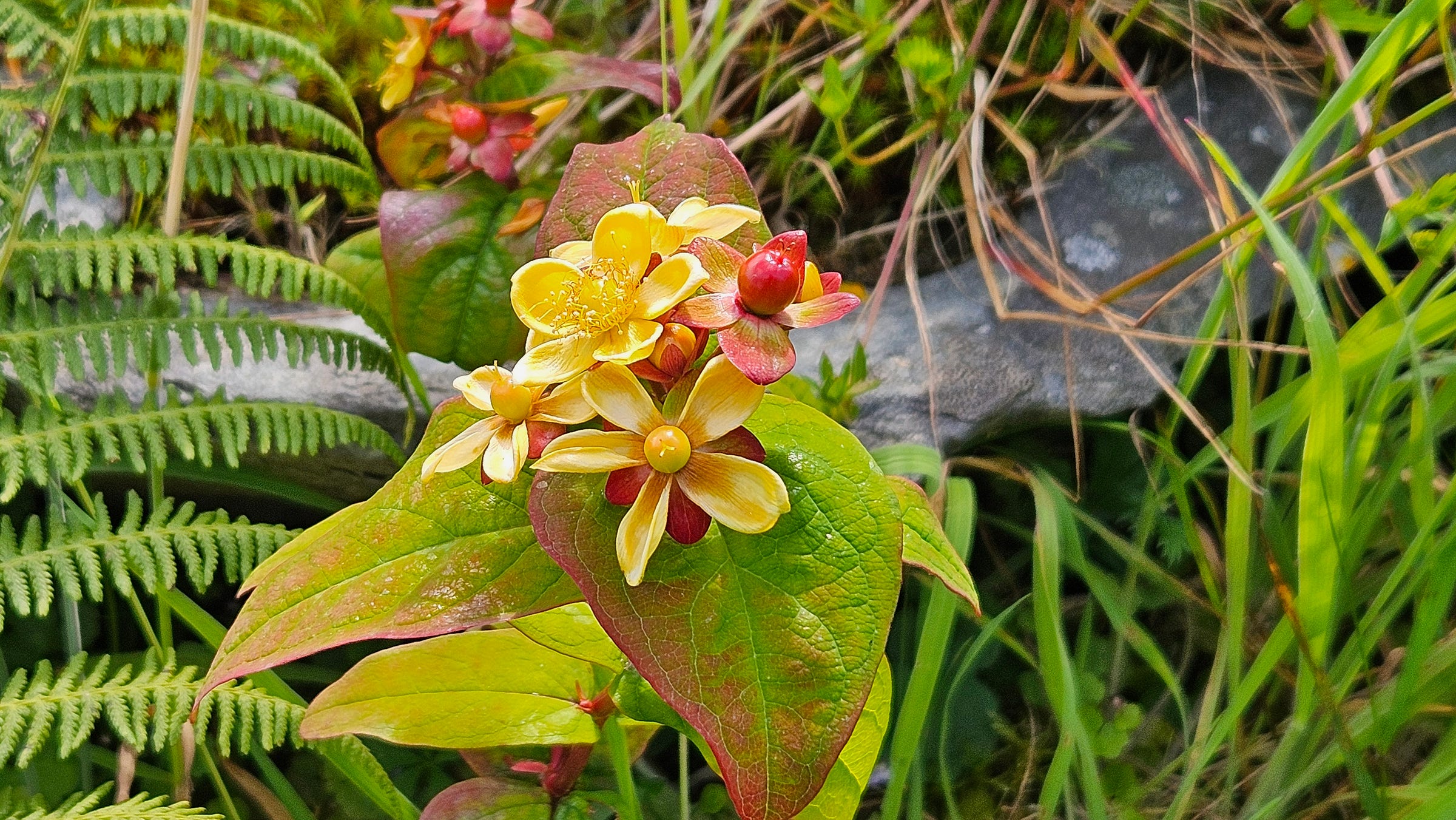
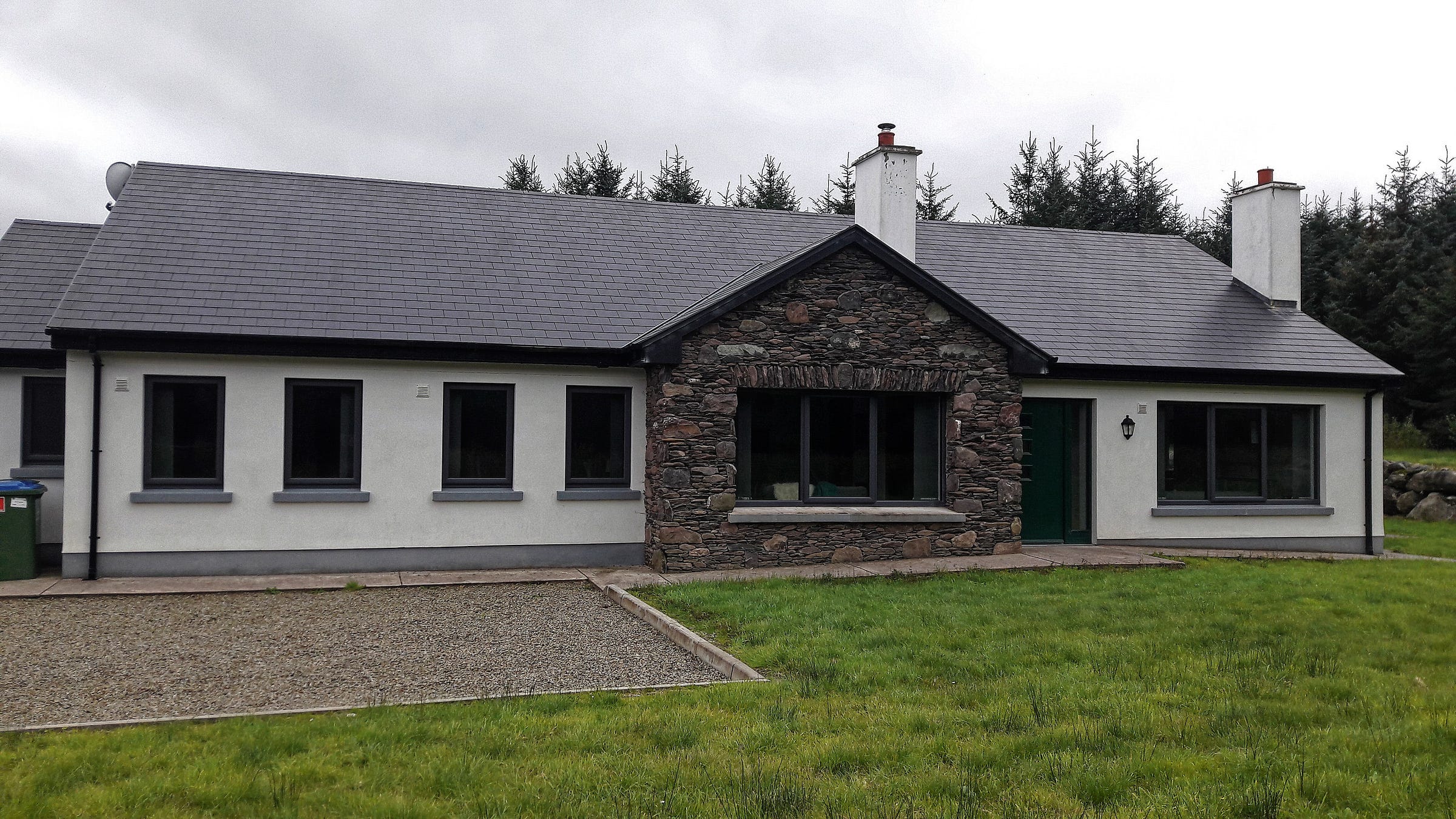
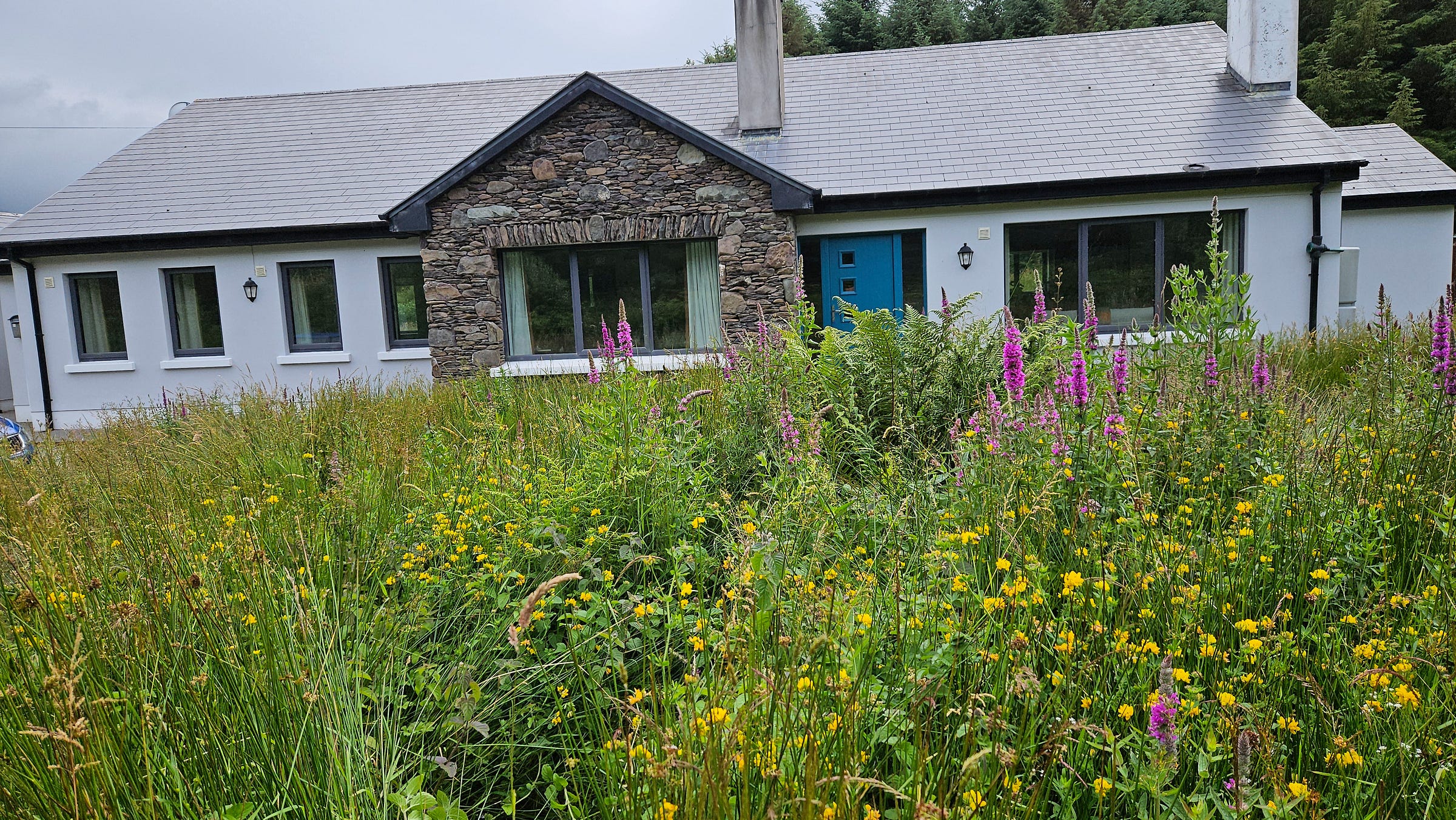

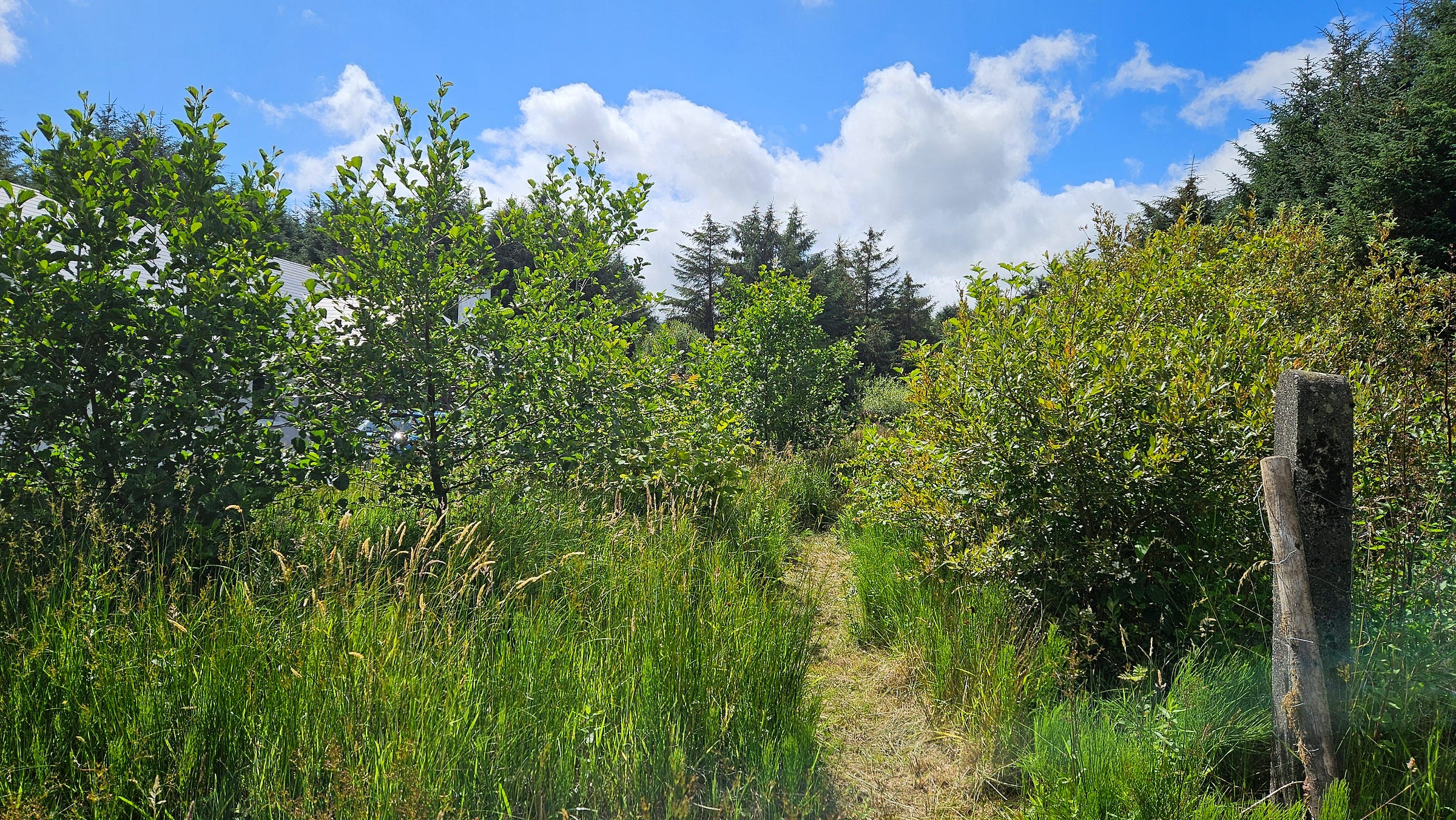
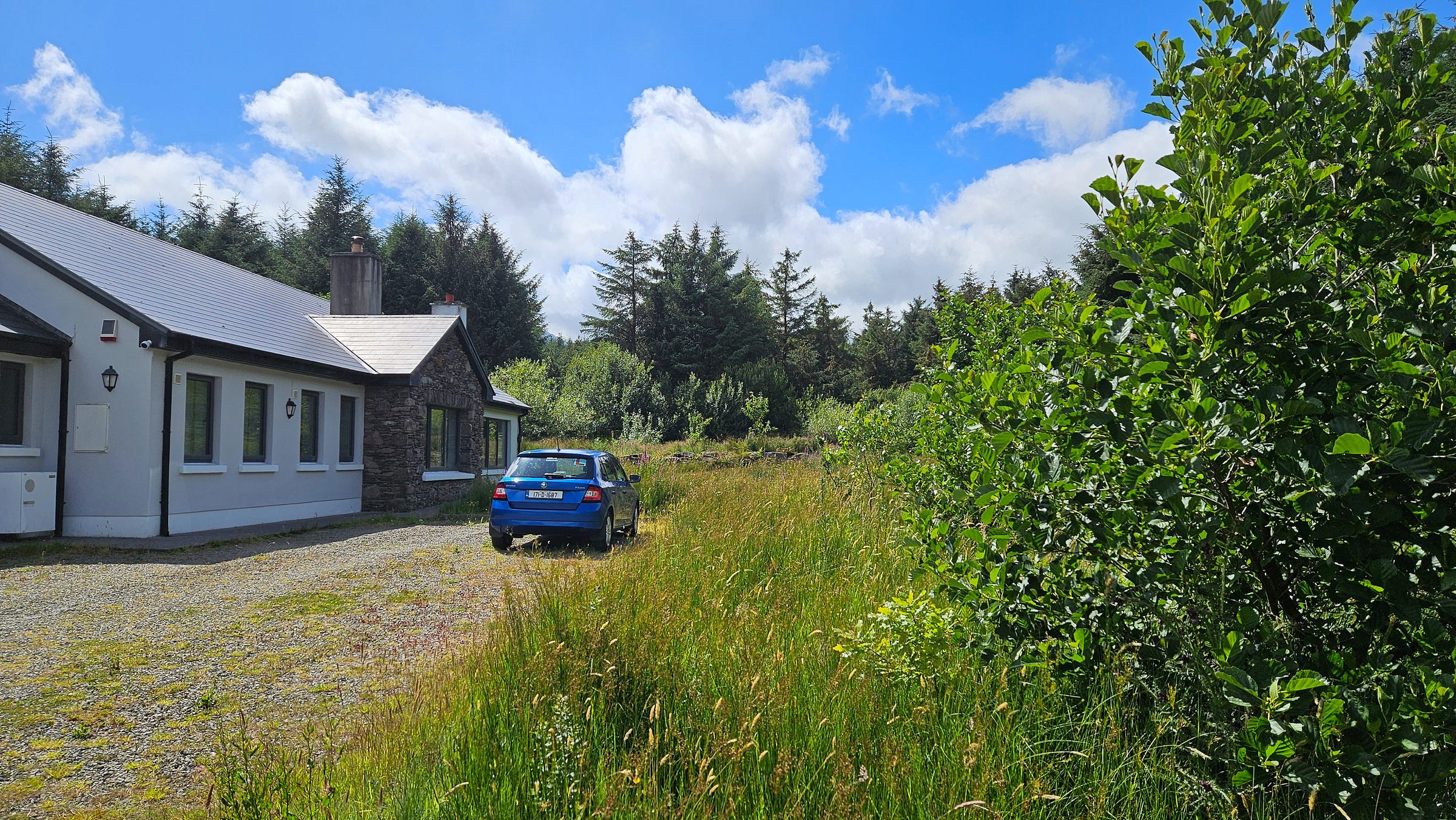
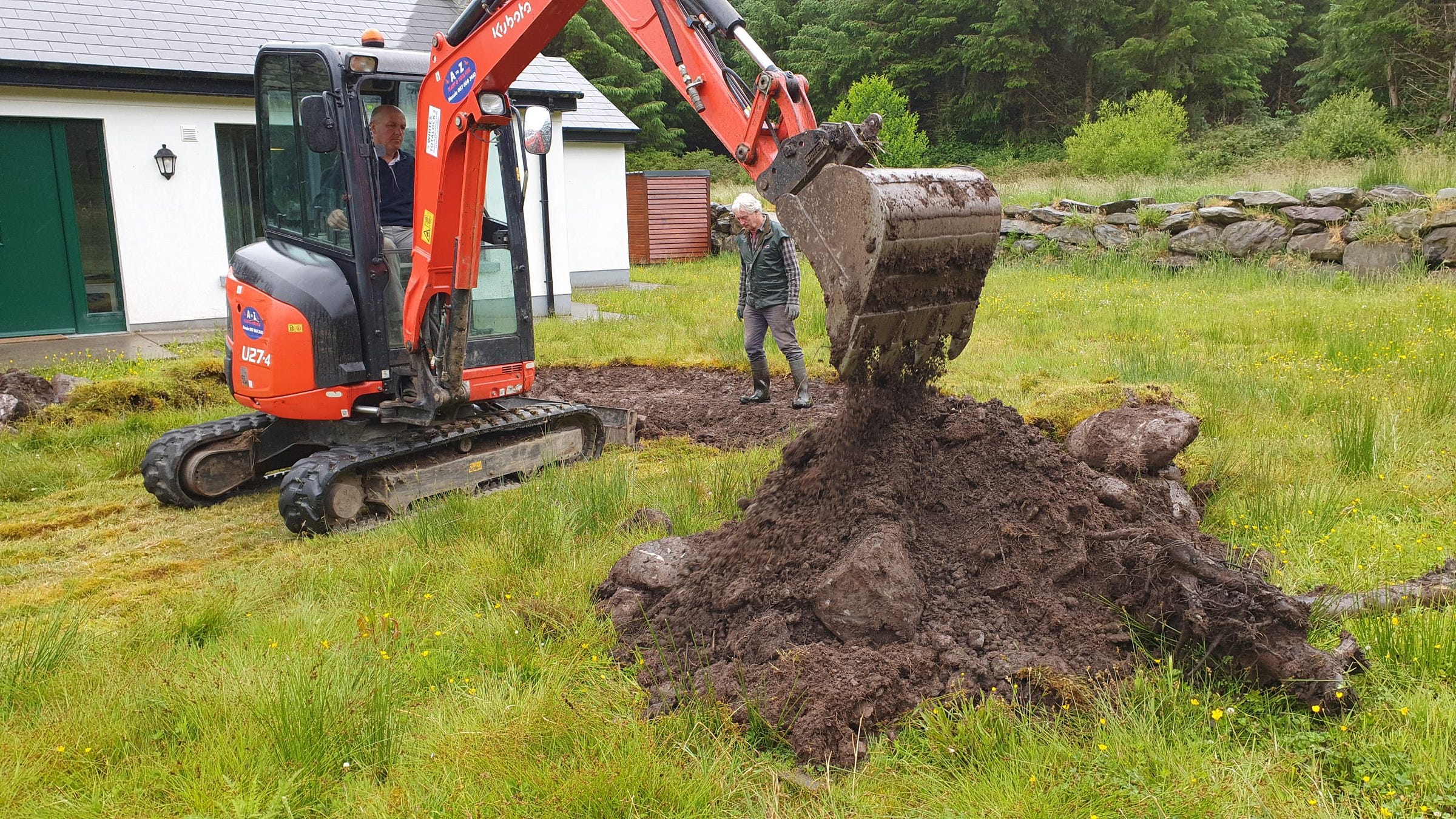

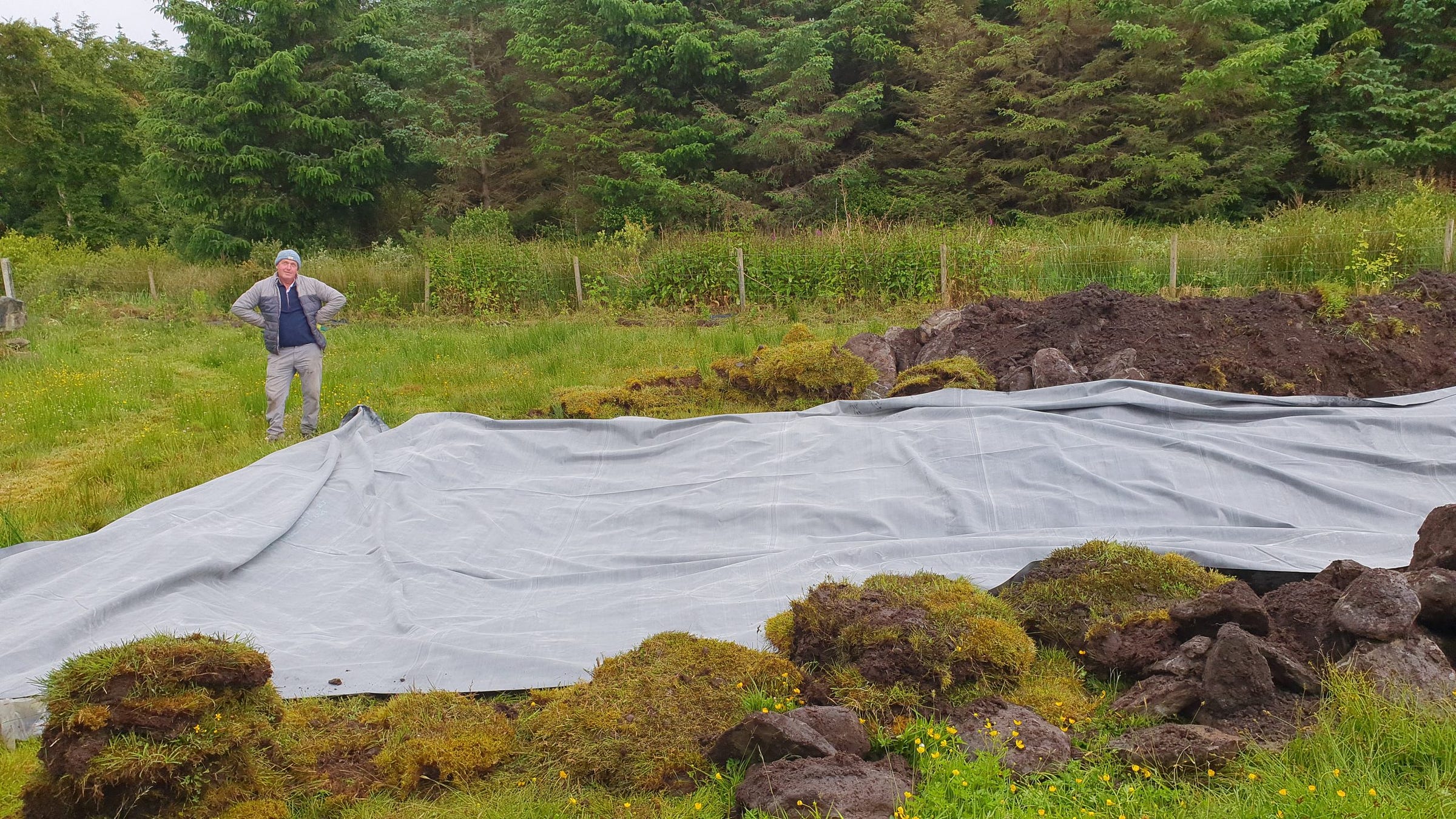
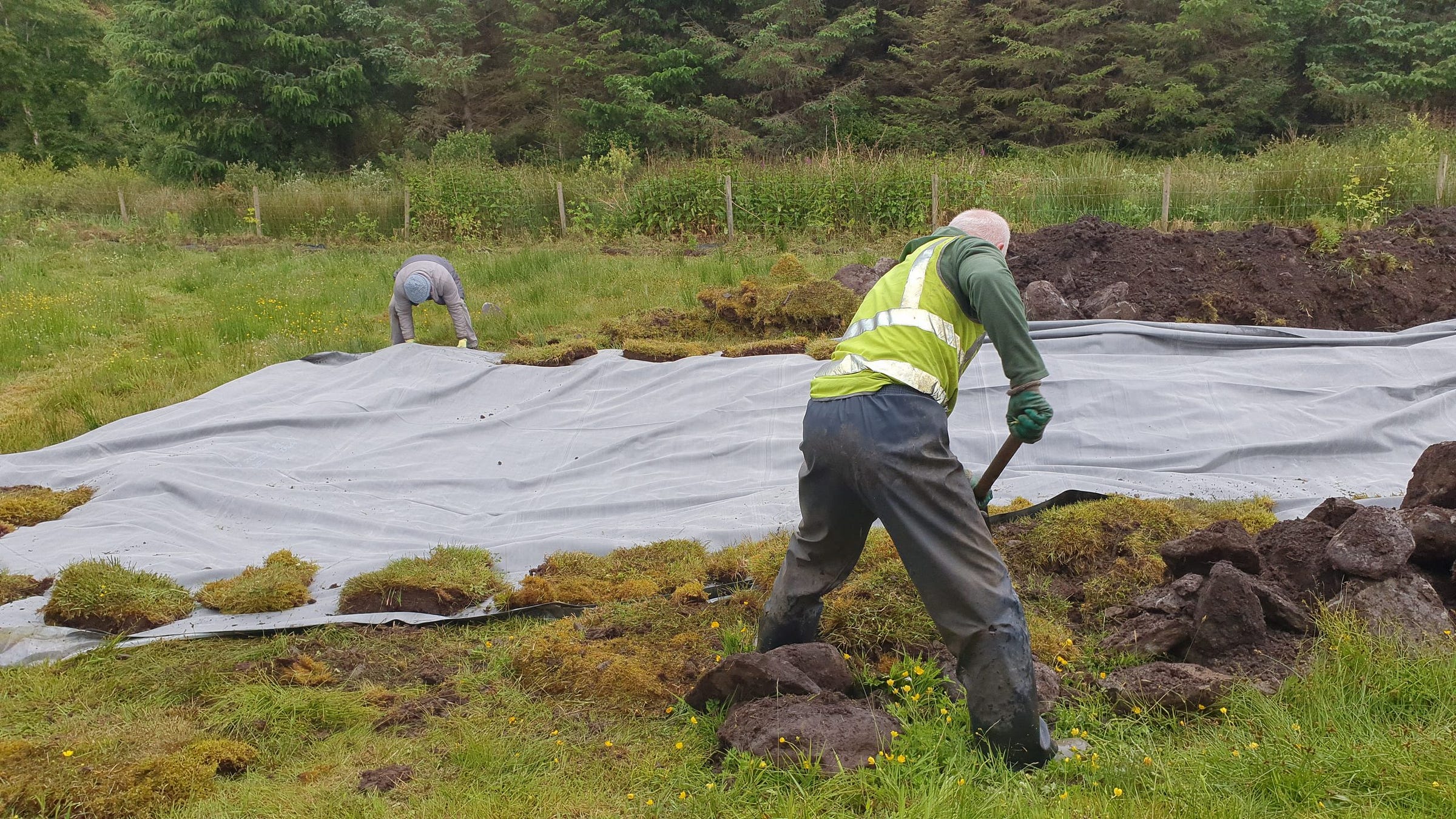
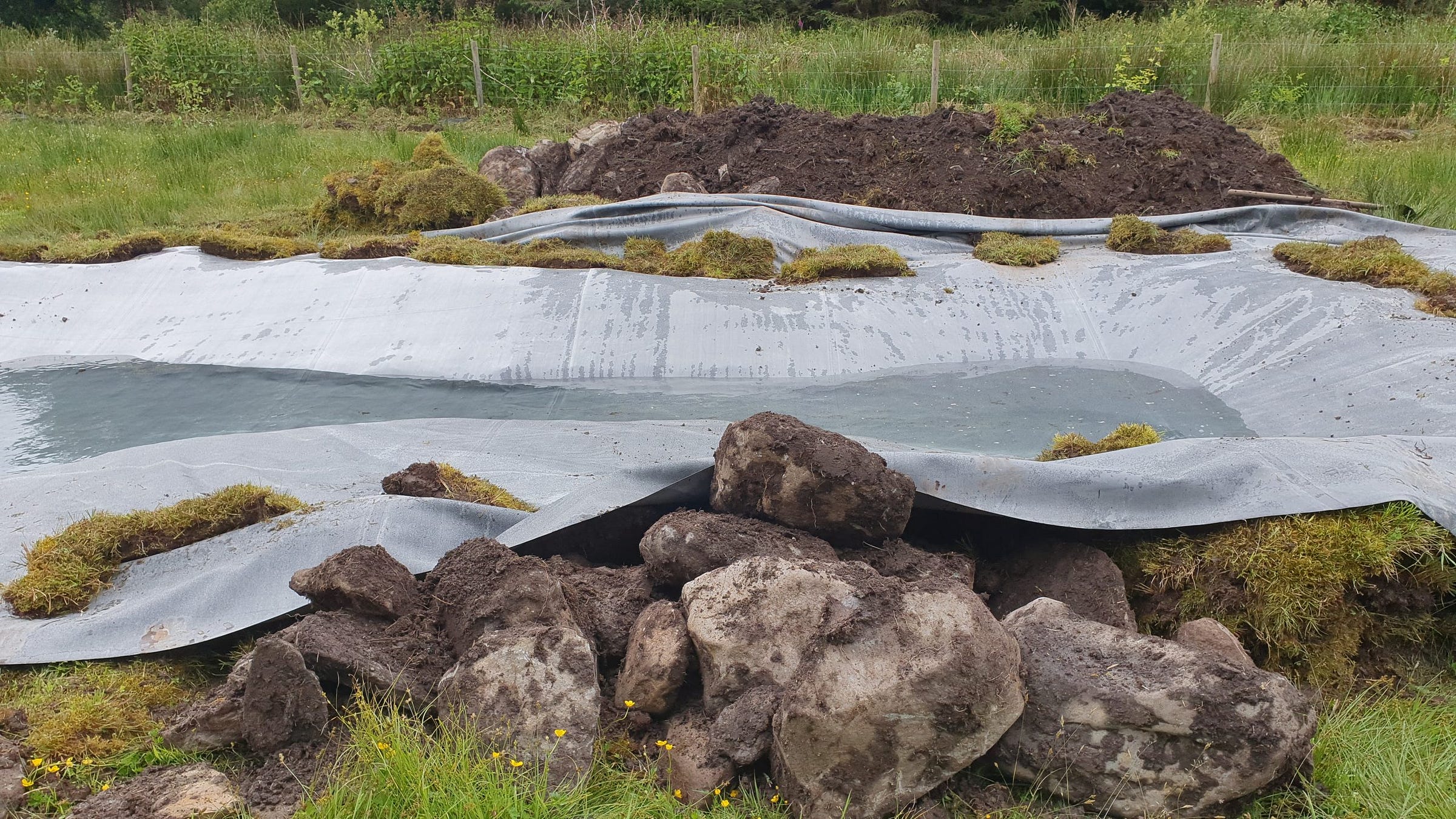

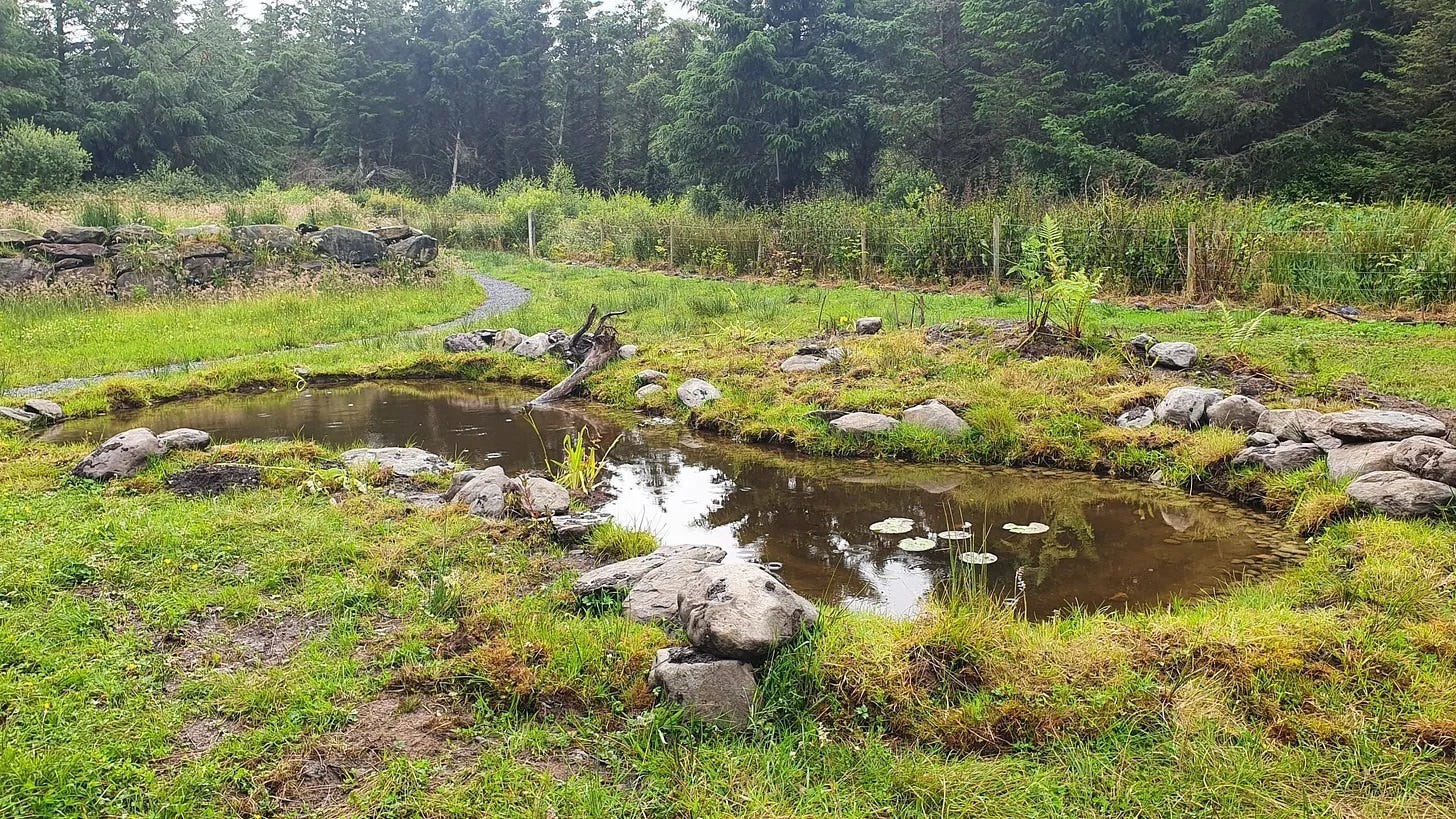
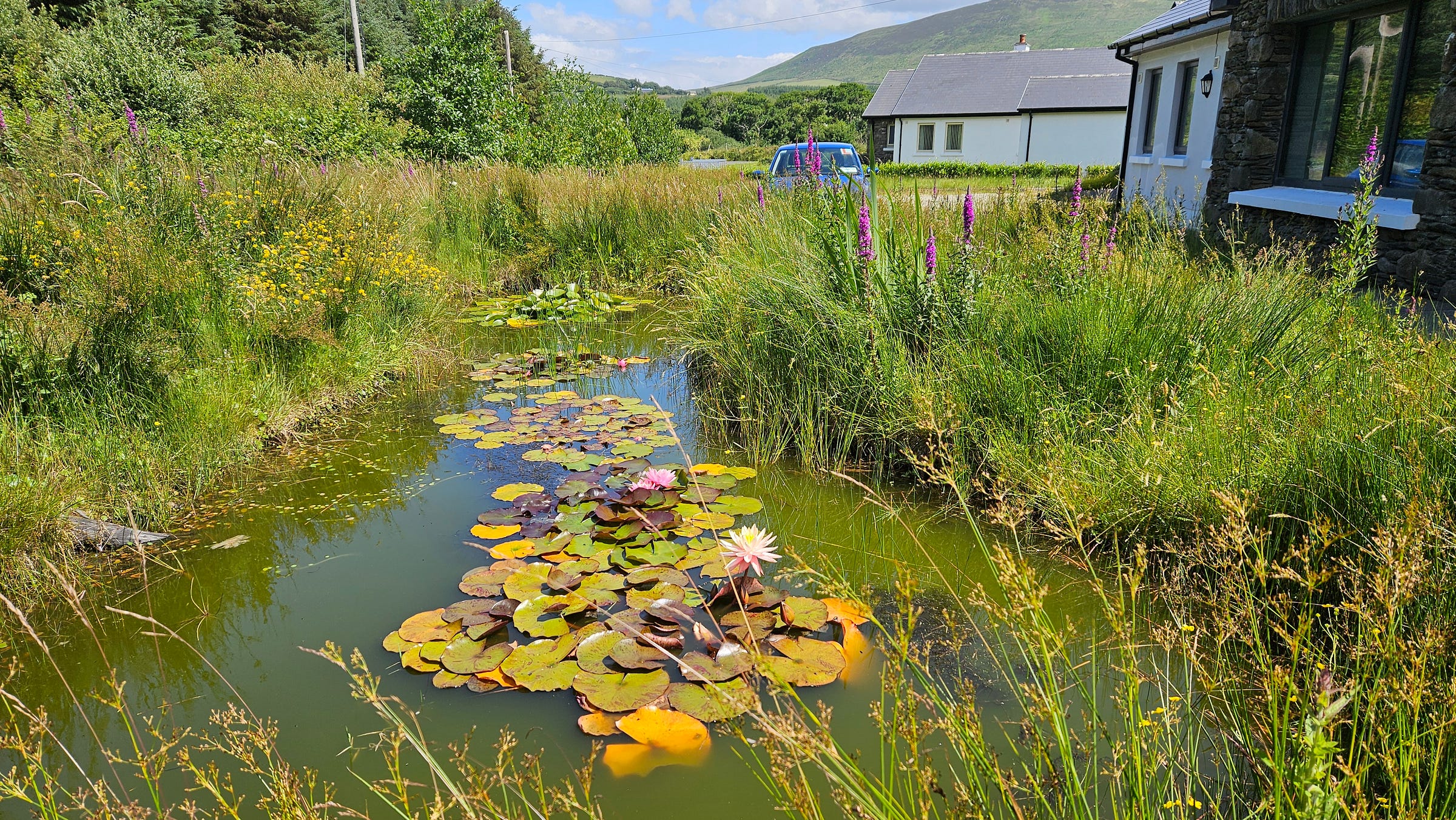
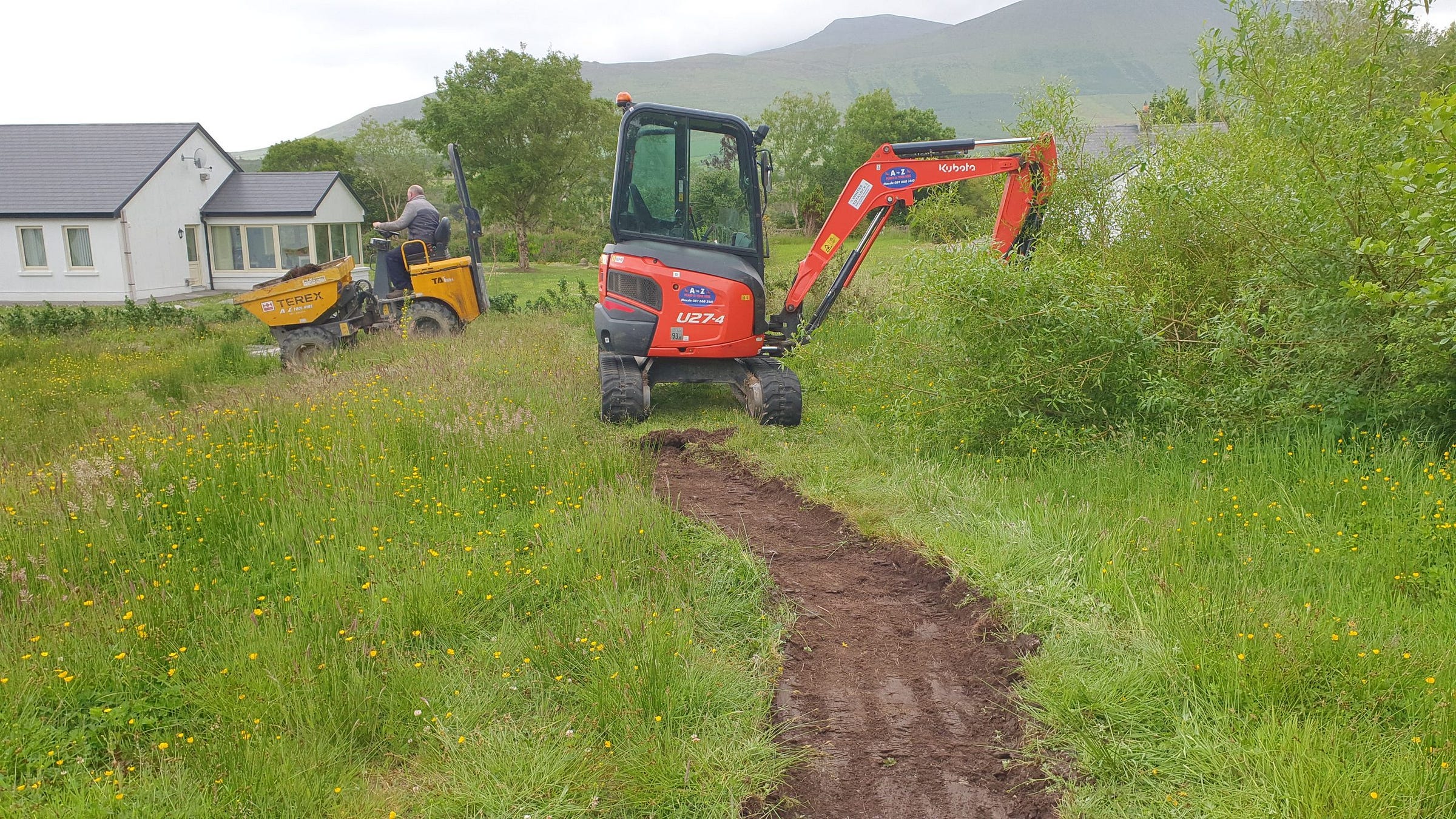
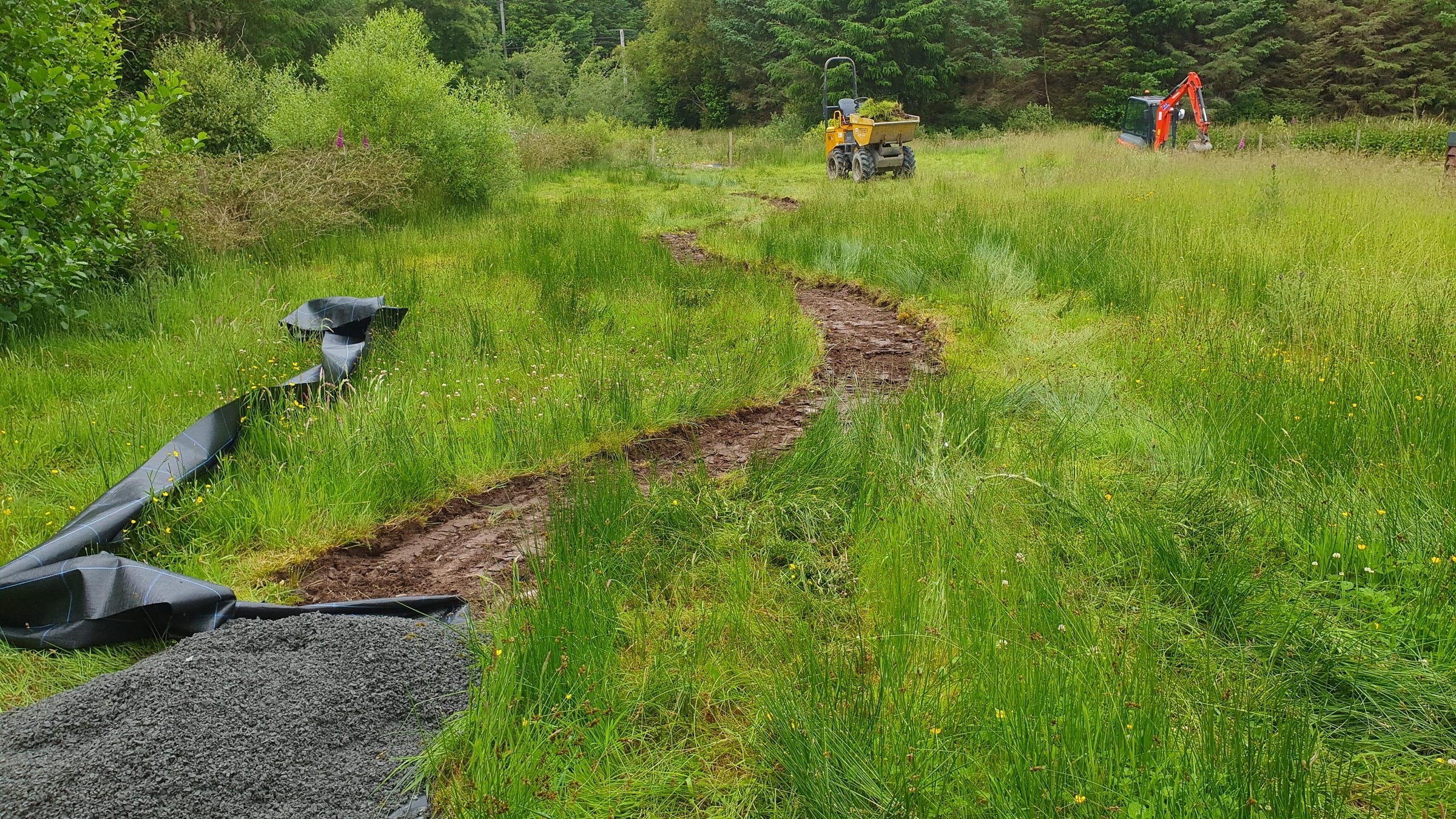


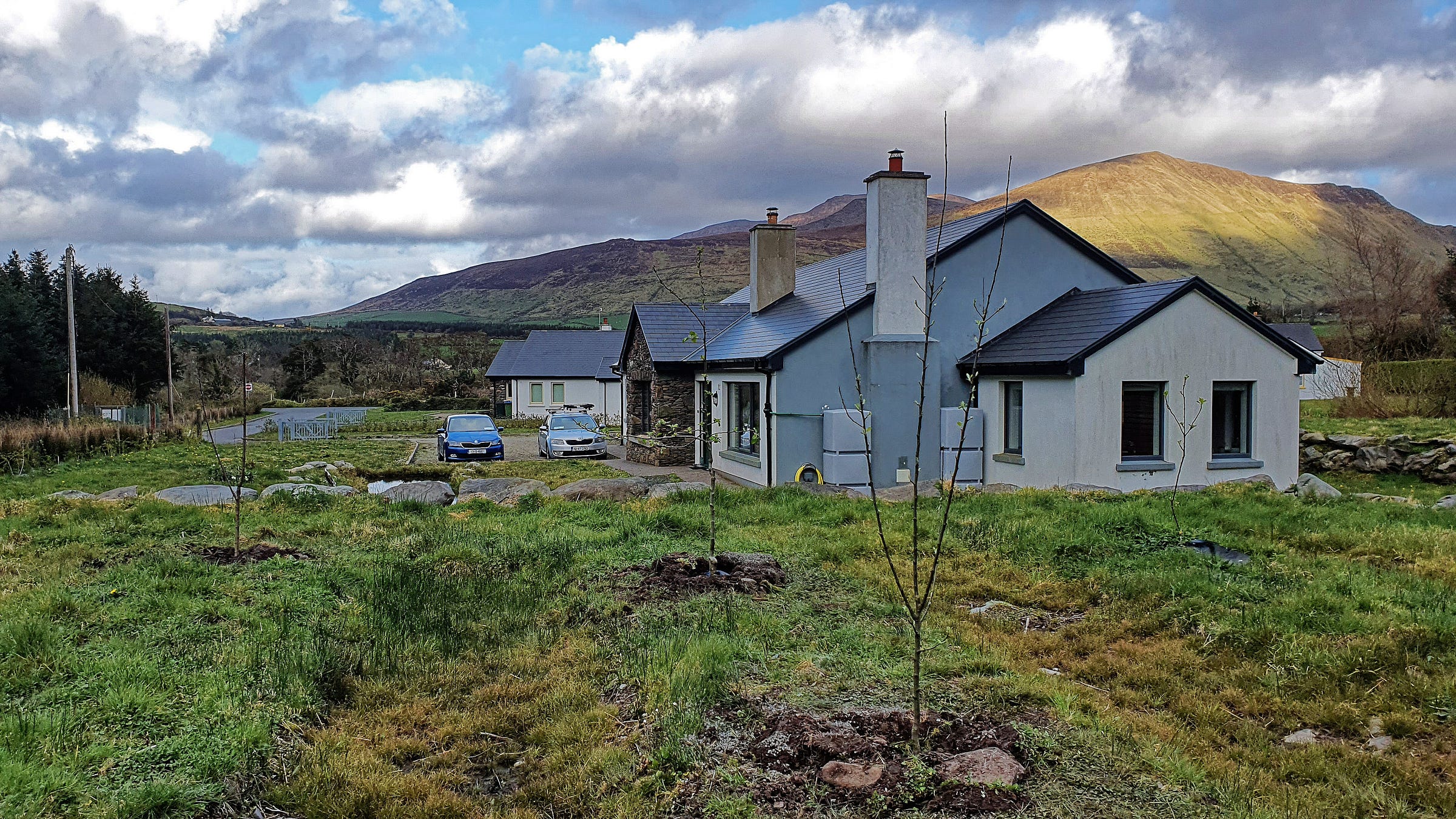
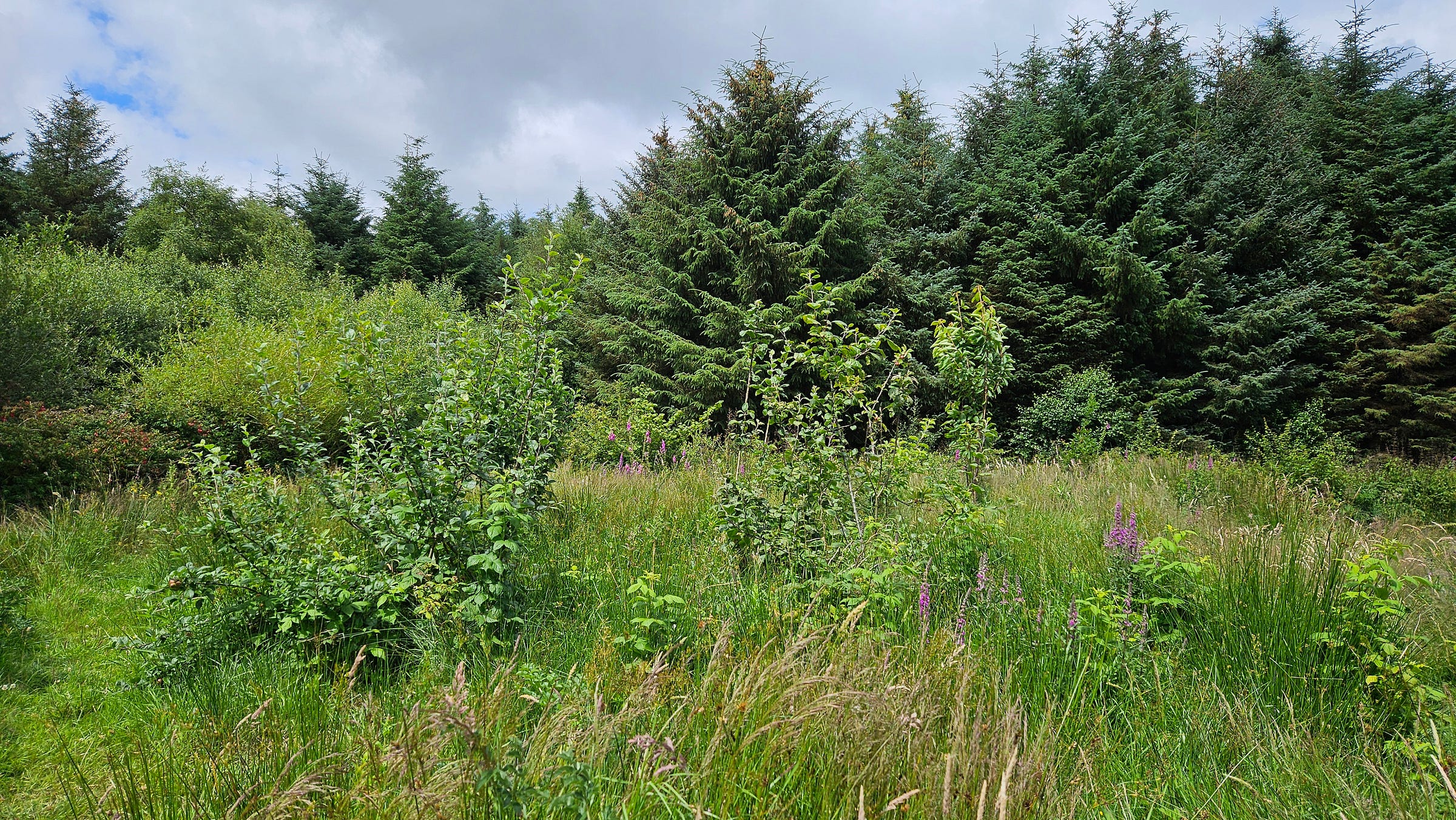
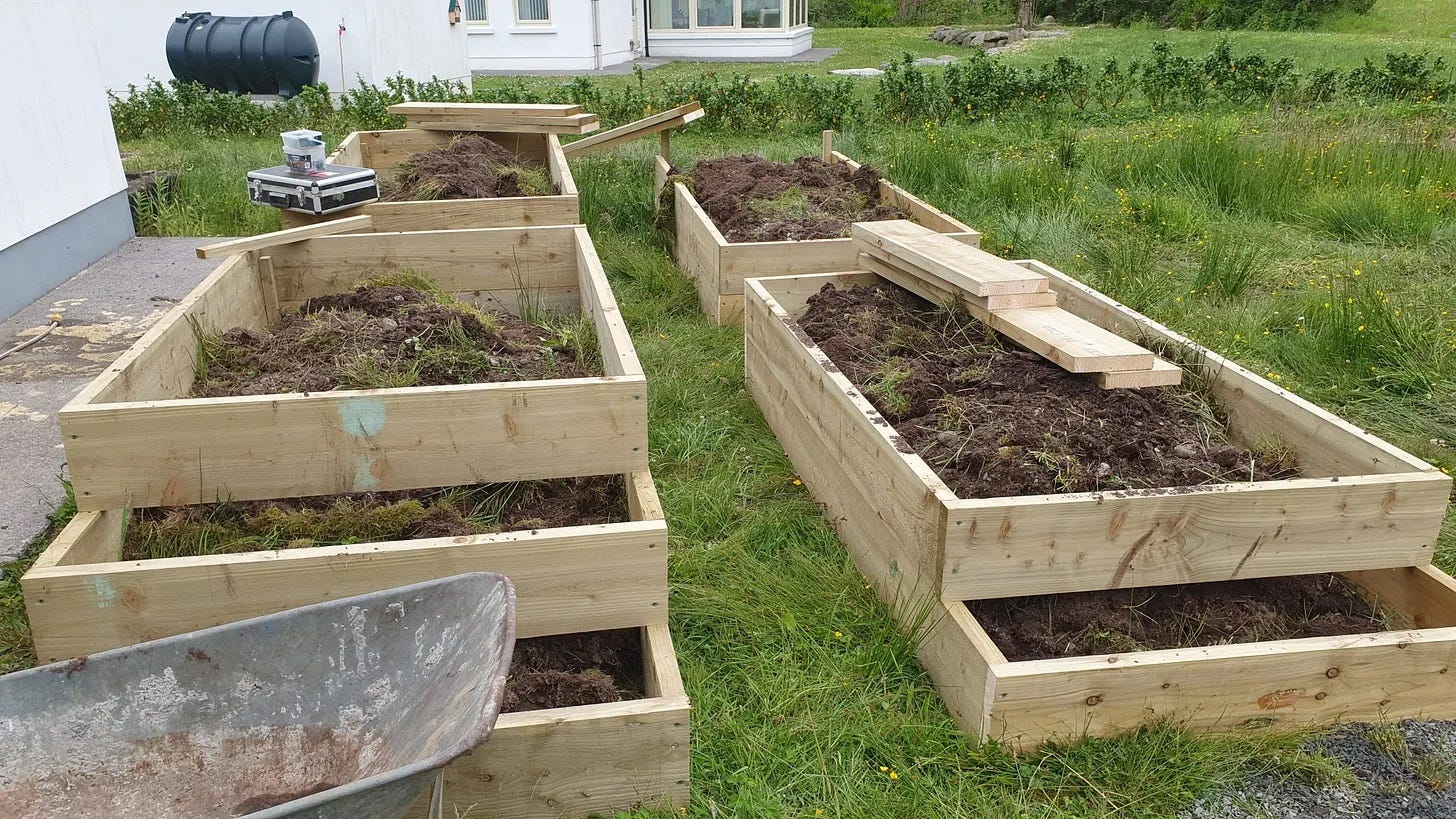
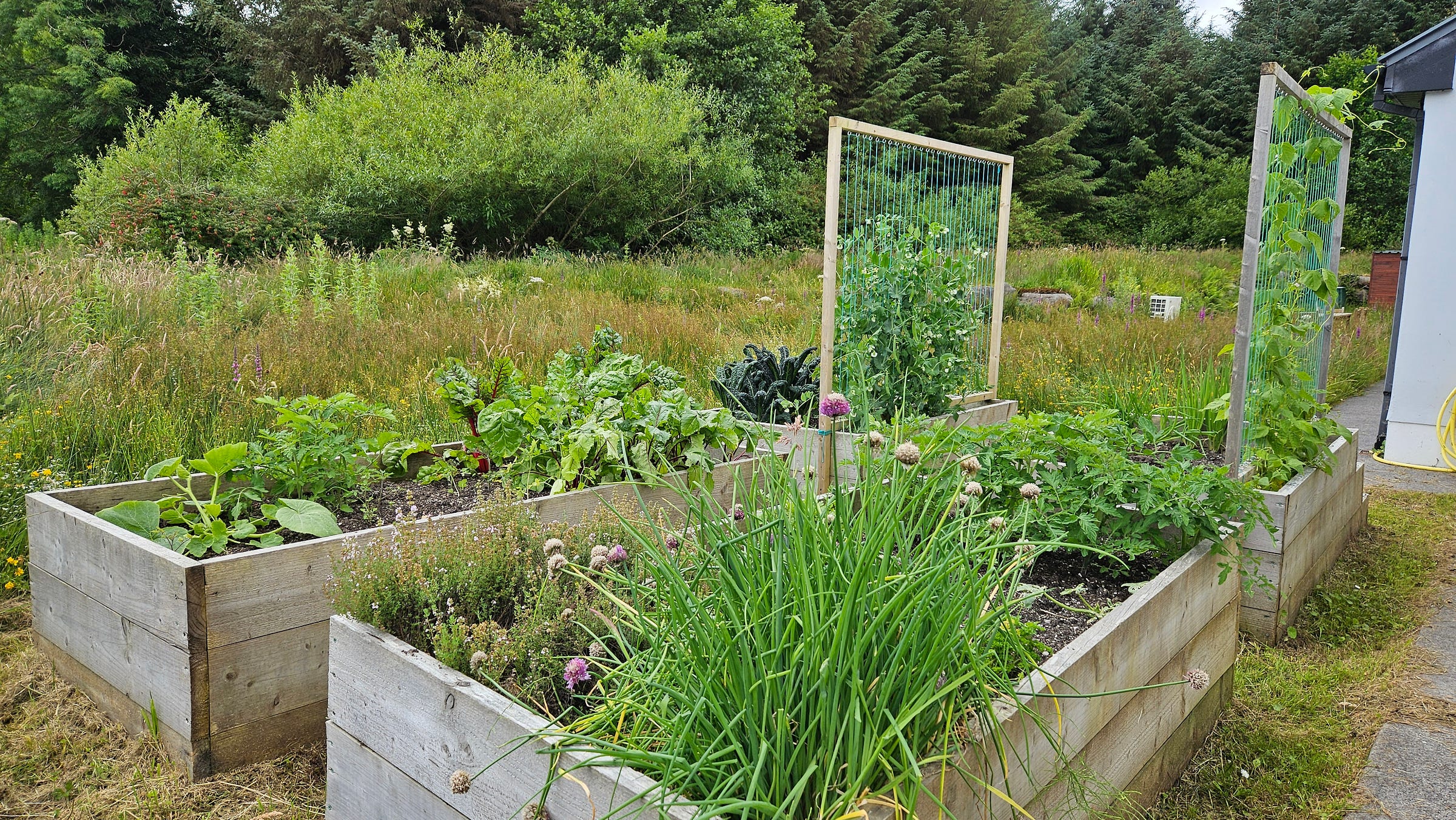
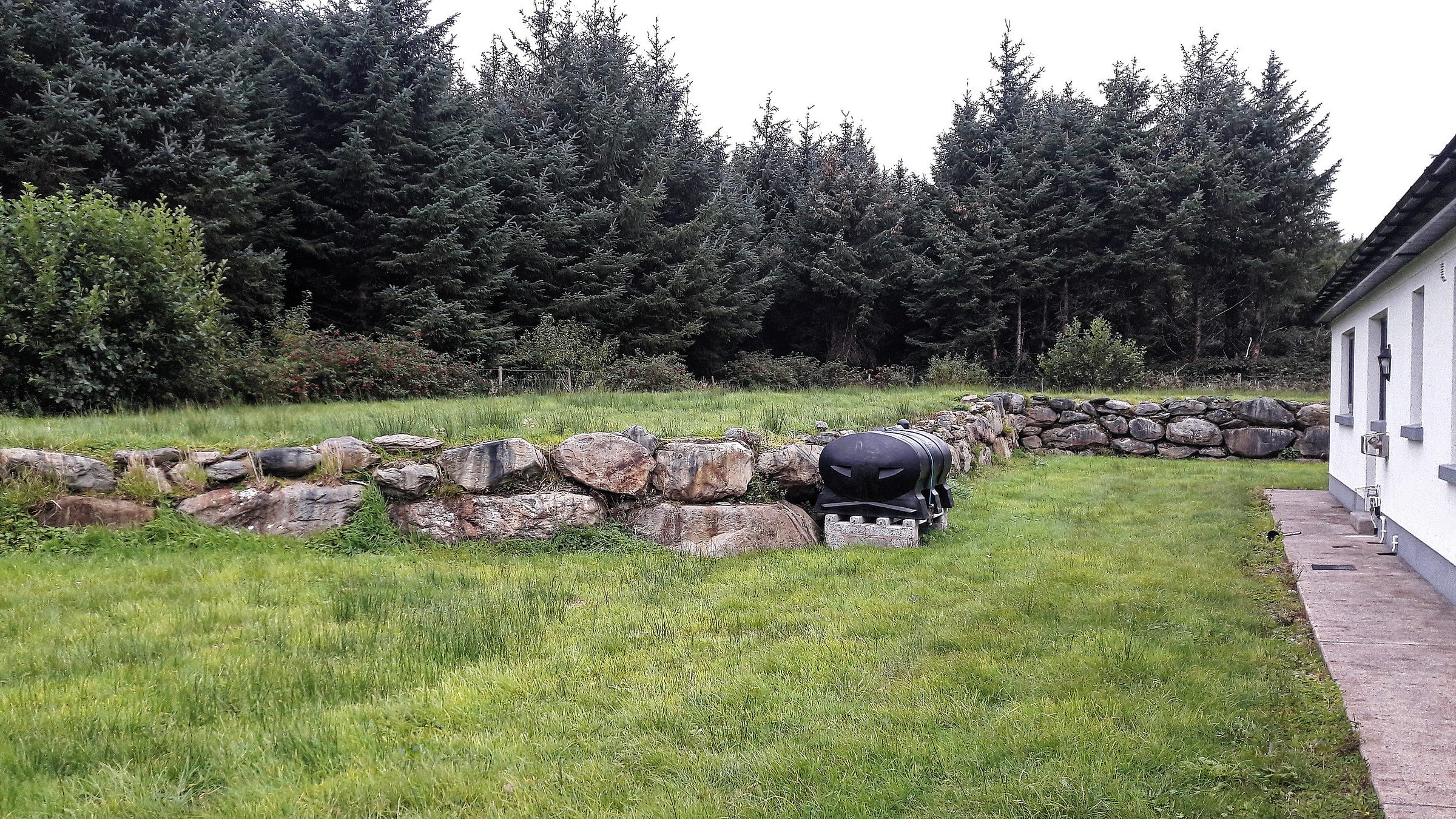
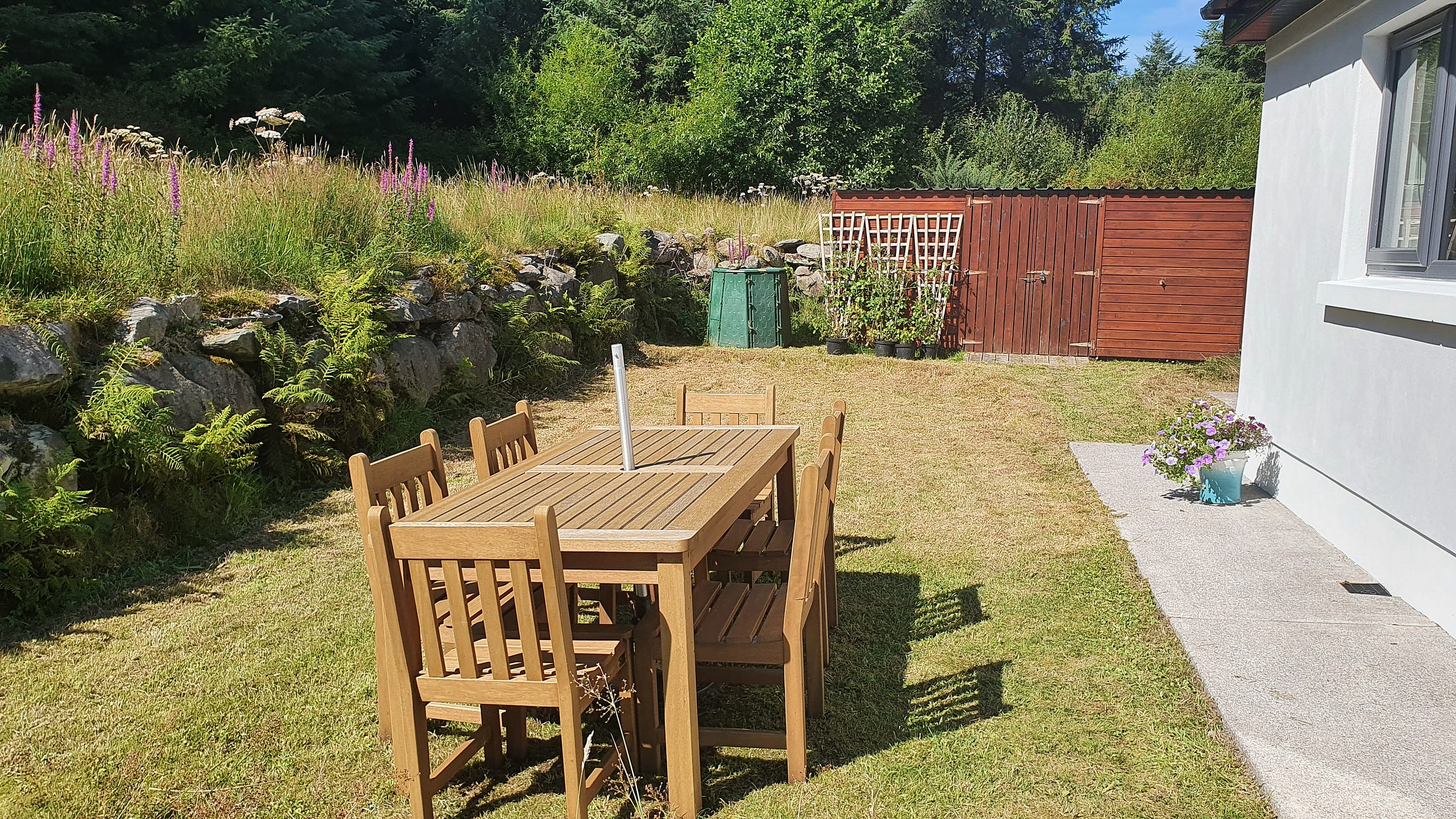
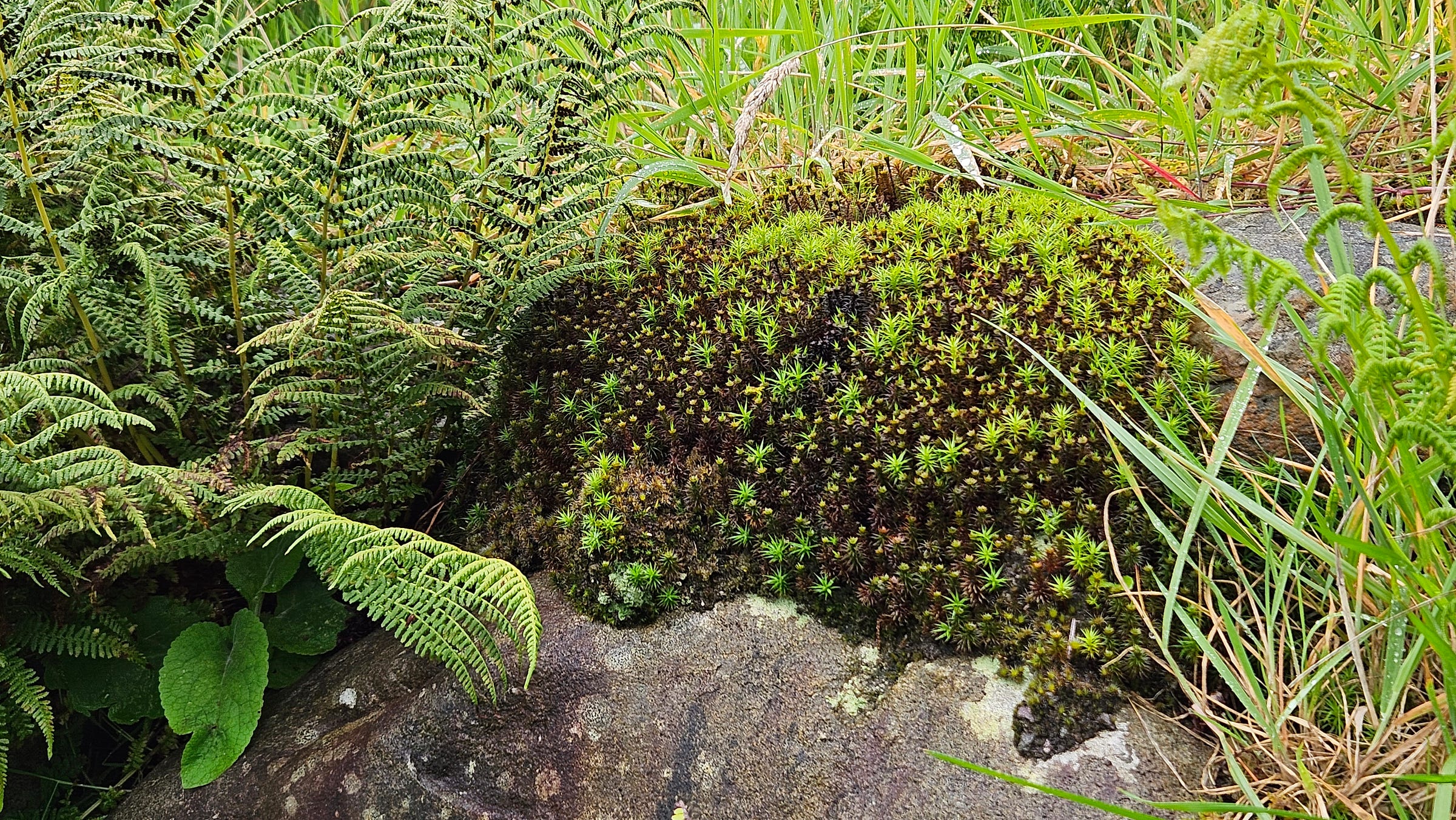
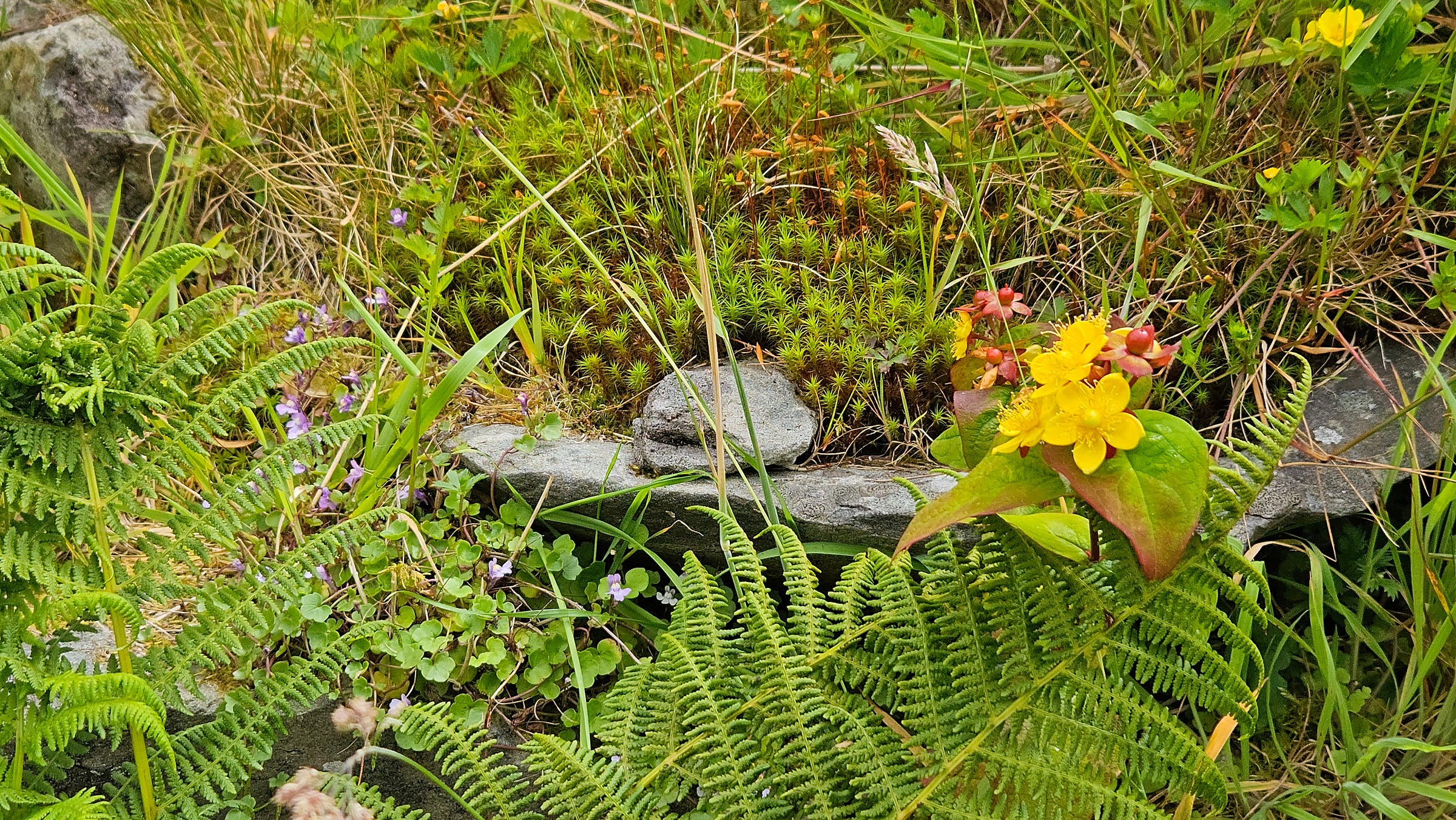
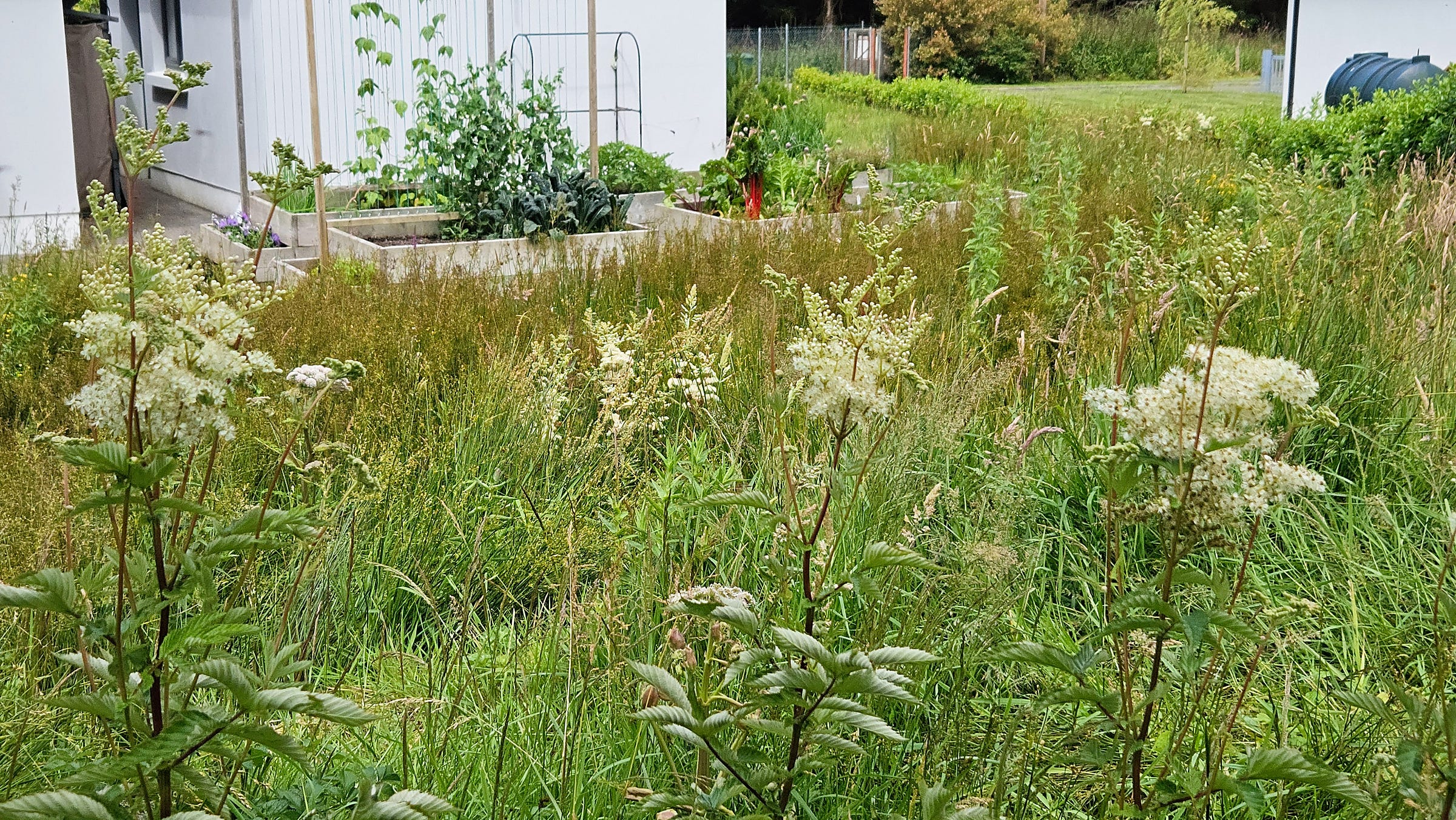
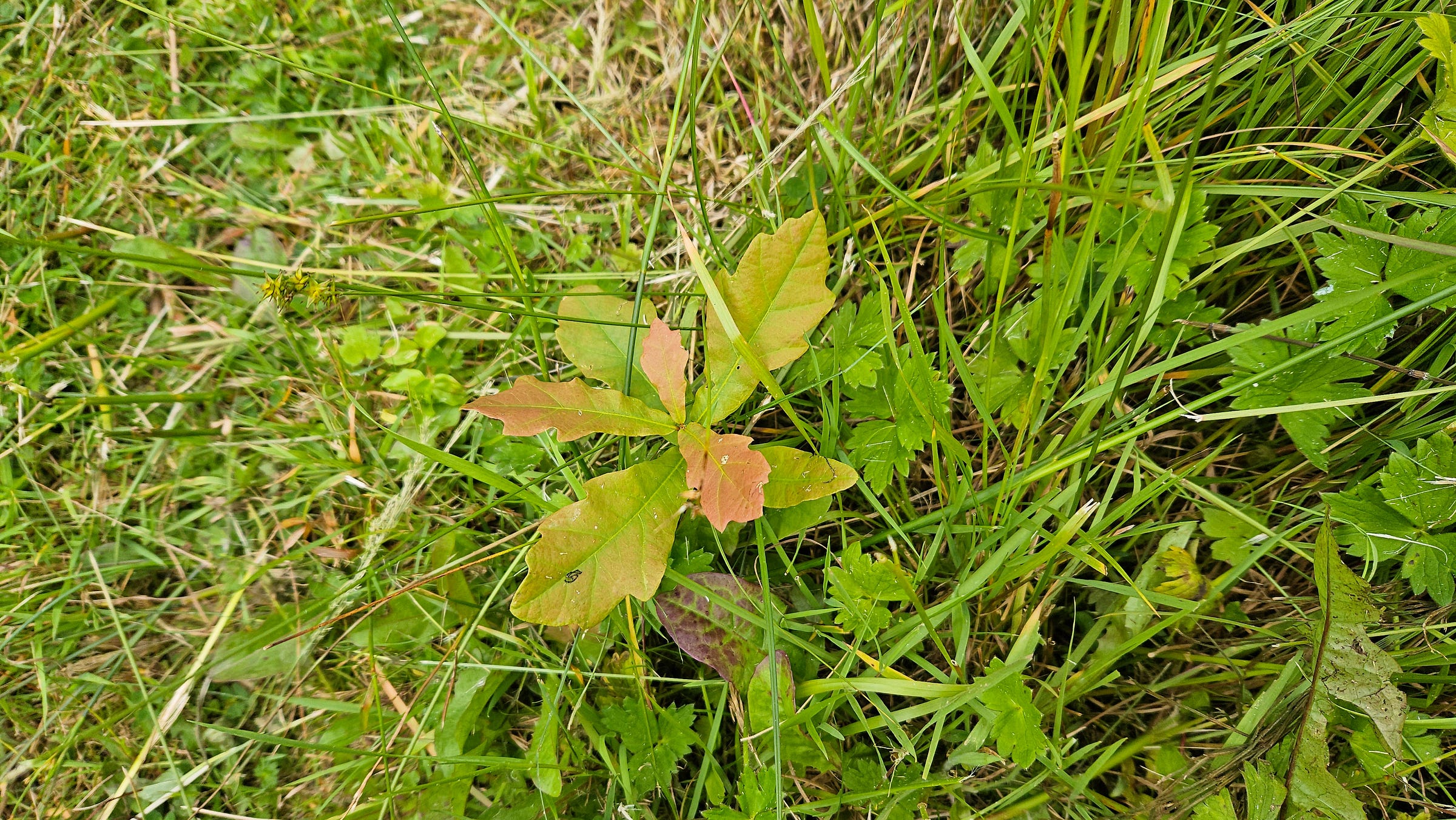
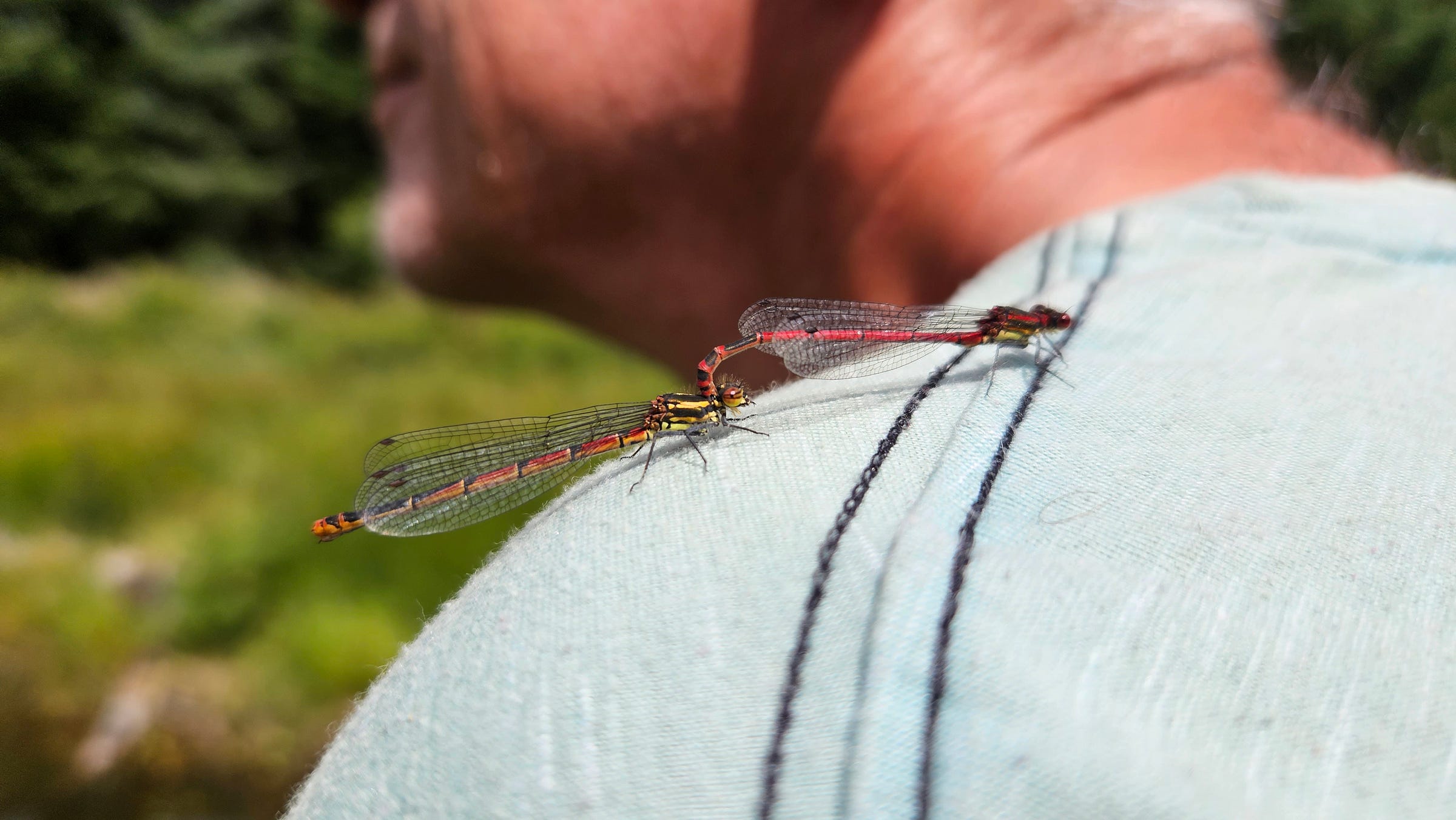
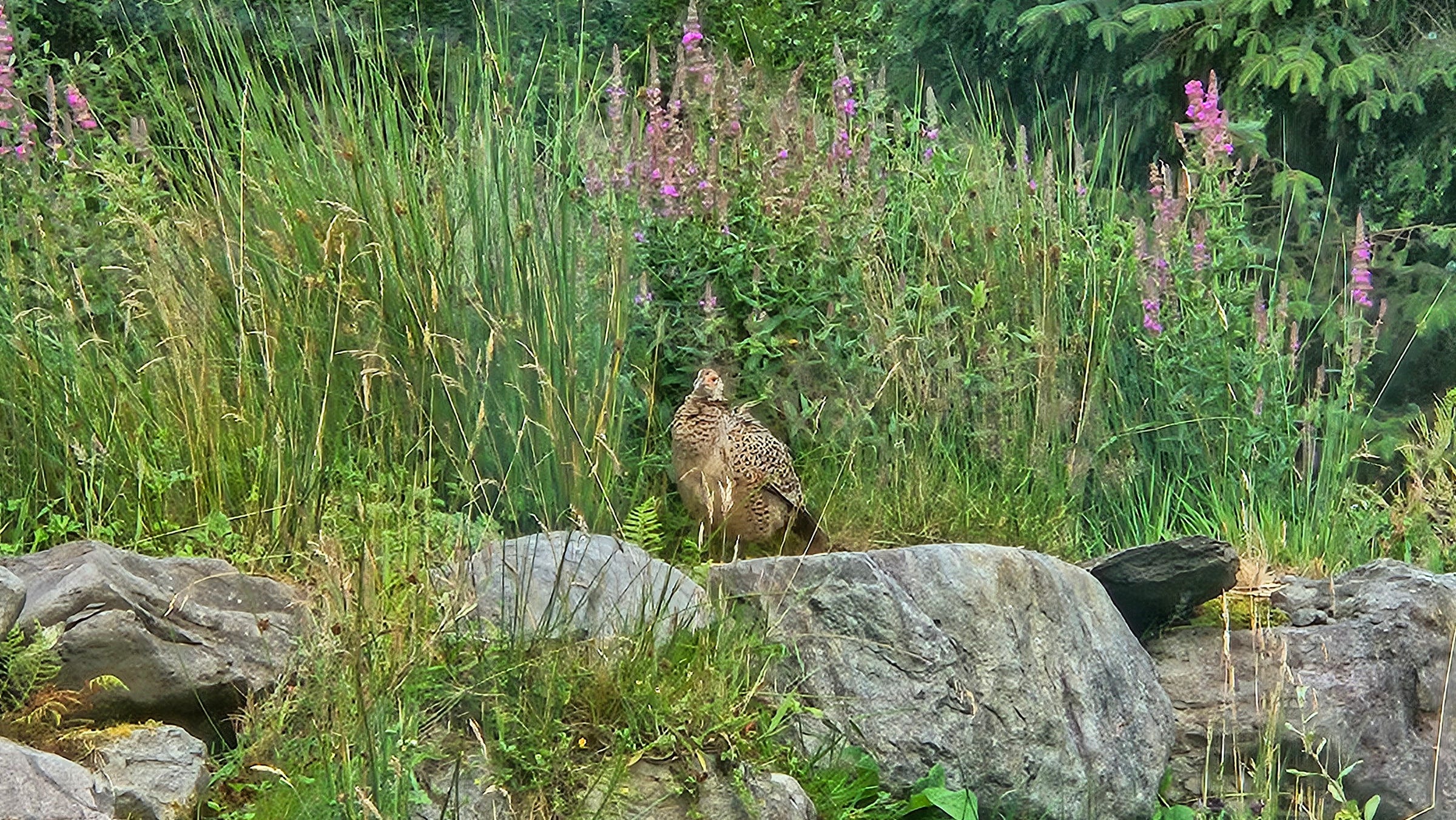

I would wholeheartedly endorse the books recommended in this piece of writing particularly ‘We are the Ark’ by Mary Reynolds. The illustrations by Ruth Evans speak “a thousand words”. Equally, other artists like Enagh Farrell (enaghfarrell.com) and Jane Carkill (Illustratorsireland.com) capture the natural world in a haunting and mythical way. Mary Reynolds talks about giving Mother Earth her sovereignty back in not telling her what clothes to wear (see her You Tube video “Saving the earth patch by patch. Setting her free to be sovereign, Aug 10th 2022). The book ‘Wild Embrace’ by Anja Murray is also a powerful reference book to have on your shelf. Your garden is a credit to you Clarice and its so interesting to see a ‘work in progress’ report for amateurs like me. Hope Winter yields some gems.
Clarice, this is such a delightful read! It's fascinating to see how your garden went from a boggy blank slate to a lush, vibrant ecosystem. I can’t help but imagine that if the plants could talk, they'd probably be gossiping about the neighborhood's dramatic shift from neat lawns to a mini-wilderness. Keep up the great work; your garden’s definitely living its best life. 🌿🌻